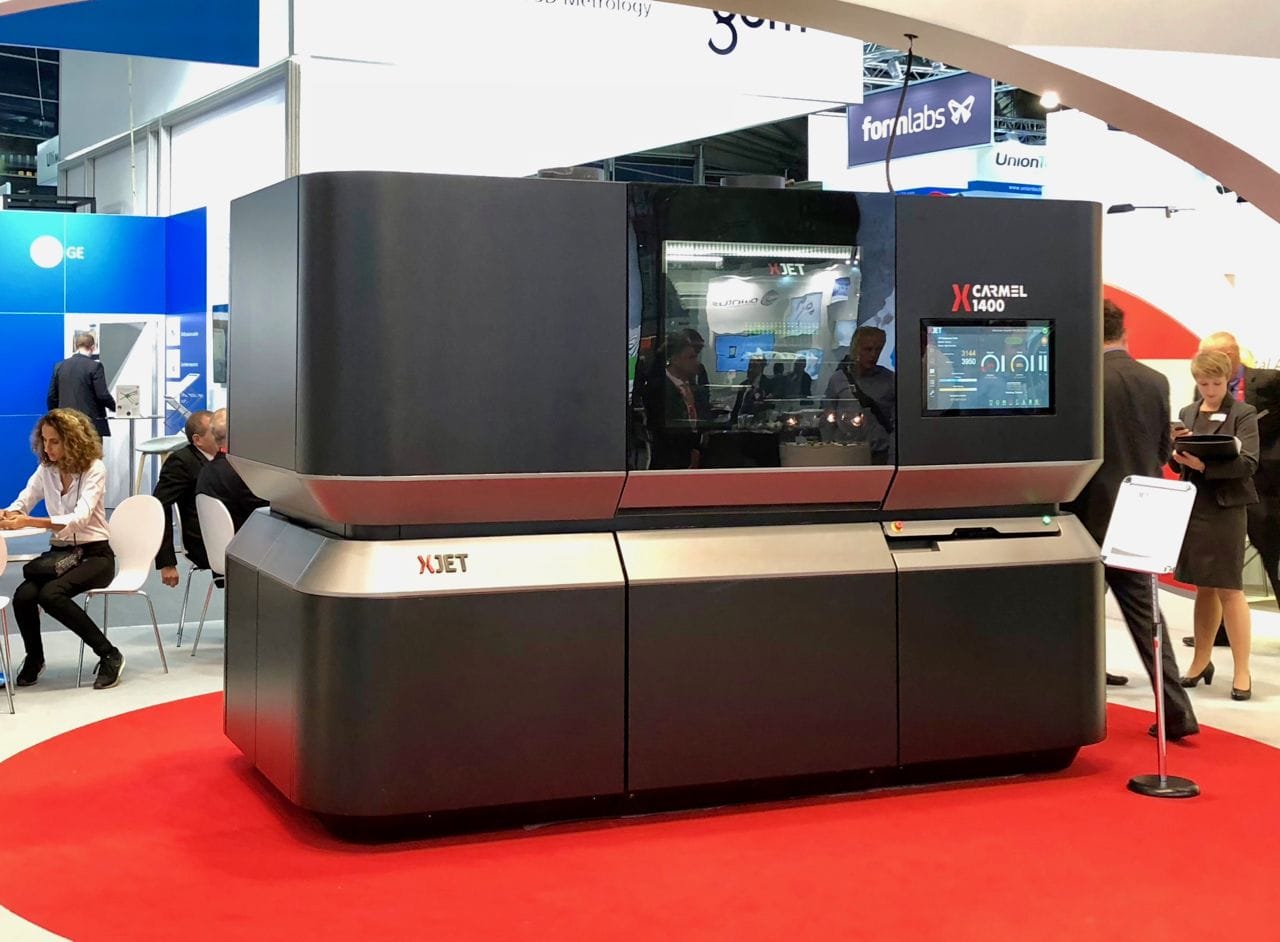![The XJET Carmel 1400 at a recent 3D printing trade show [Source: Fabbaloo]](https://fabbaloo.com/wp-content/uploads/2020/05/image-asset_img_5eb09860cb41a.jpg)
I’ve noticed something interesting about the upcoming RAPID + TCT 3D print trade show.
Some of the vendors who have booked space at the show are letting us know in advance they will be exhibiting “hands-on” displays. These likely will be examples of the companies’ equipment and processes in action, right before your eyes.
This is a little different from previous shows, where we typically receive advanced notice of, for example, a new machine offering, or an unusual material. Sometimes the machines shown are not actually for sale, and in some cases aren’t even operational!
Some of the new machines are so new that we are not even allowed to take photographs of them. We’ve even had cases where we are not allowed to look inside a machine. This is because, believe it or not, sometimes there is nothing inside!
But going “hands-on” is quite a different matter, and I think I know why this strategy is occurring more frequently.
With the increased interest in 3D printing by professionals and industry, there is a lot more money at stake. Industry representatives in attendance may be considering the purchase of several high-priced 3D printers, for example, potentially totaling millions of dollars.
That level of money is so significant that extra diligence is required before any purchase. This is particularly important given some of the trade show shenanigans that have gone on for years by certain 3D printing companies. It is critically important to ensure each dollar is spent wisely.
One way machine vendors can assist clients with this is to develop a degree of trust. That might be established by demonstrating that the equipment actually does what they say it will do. One of the companies executing this strategy is XJET, hence the image at top. They intend on demonstrating their support removal system at their RAPID+TCT booth, for example.
Sometimes that level of trust is gained by taking a prospective client through an existing installation at a customer site so that they can see not only that the system works, but also how it works. Site visits of this type demonstrate that the vendor has a high degree of trust in their equipment, and that trust can be absorbed by the prospect.
But taking every prospect for a site visit is impractical, both logistically and financially, so other approaches are necessary.
If you cannot take the client to the site, then the next best thing is to take the site to the client. That seems to be the approach being taken by some of the more innovative 3D print vendors at the upcoming show. By demonstrating operating equipment they can ensure prospective clients literally see the system working with their own eyes.
One thing that might be missing in this approach as compared to an actual site visit is the ability to speak with and ask the questions of an actual user of the system that is not the vendor. Quite often you’ll receive highly trustworthy information from such questioning. Thus, it would be in the interest of the vendor to bring along a couple of client representatives to help them answer questions at their booth.
All of this is simply to gain the trust of prospective clients, and I think it’s a very good approach, because in 3D printing, trust is everything.











The fate of major 3D printing conferences in 2020 is unclear with the ongoing virus outbreak. We have thoughts on what it could mean.